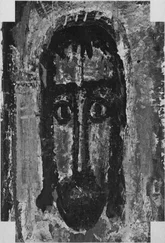Francois-Xavier Meunier - Dual Innovation Systems
Здесь есть возможность читать онлайн «Francois-Xavier Meunier - Dual Innovation Systems» — ознакомительный отрывок электронной книги совершенно бесплатно, а после прочтения отрывка купить полную версию. В некоторых случаях можно слушать аудио, скачать через торрент в формате fb2 и присутствует краткое содержание. Жанр: unrecognised, на английском языке. Описание произведения, (предисловие) а так же отзывы посетителей доступны на портале библиотеки ЛибКат.
- Название:Dual Innovation Systems
- Автор:
- Жанр:
- Год:неизвестен
- ISBN:нет данных
- Рейтинг книги:4 / 5. Голосов: 1
-
Избранное:Добавить в избранное
- Отзывы:
-
Ваша оценка:
- 80
- 1
- 2
- 3
- 4
- 5
Dual Innovation Systems: краткое содержание, описание и аннотация
Предлагаем к чтению аннотацию, описание, краткое содержание или предисловие (зависит от того, что написал сам автор книги «Dual Innovation Systems»). Если вы не нашли необходимую информацию о книге — напишите в комментариях, мы постараемся отыскать её.
Dual Innovation Systems — читать онлайн ознакомительный отрывок
Ниже представлен текст книги, разбитый по страницам. Система сохранения места последней прочитанной страницы, позволяет с удобством читать онлайн бесплатно книгу «Dual Innovation Systems», без необходимости каждый раз заново искать на чём Вы остановились. Поставьте закладку, и сможете в любой момент перейти на страницу, на которой закончили чтение.
Интервал:
Закладка:
7 General Conclusion
8 References
9 Index
10 End User License Agreement
Pages
1 v
2 iii
3 iv
4 ix
5 x
6 xi
7 xii
8 xiii
9 xiv
10 xv
11 xvi
12 xvii
13 1
14 3
15 4
16 5
17 6
18 7
19 8
20 9
21 10
22 11
23 12
24 13
25 14
26 15
27 16
28 17
29 18
30 19
31 20
32 21
33 22
34 23
35 24
36 25
37 26
38 27
39 28
40 29
41 30
42 31
43 32
44 33
45 34
46 35
47 36
48 37
49 38
50 39
51 40
52 41
53 42
54 43
55 44
56 45
57 46
58 47
59 48
60 49
61 50
62 51
63 52
64 53
65 54
66 55
67 56
68 57
69 58
70 59
71 60
72 61
73 62
74 63
75 64
76 65
77 66
78 67
79 68
80 69
81 70
82 71
83 72
84 73
85 75
86 77
87 78
88 79
89 80
90 81
91 83
92 84
93 85
94 86
95 87
96 88
97 89
98 90
99 91
100 92
101 93
102 94
103 95
104 96
105 97
106 98
107 99
108 100
109 101
110 102
111 103
112 104
113 105
114 106
115 107
116 108
117 109
118 110
119 111
120 112
121 113
122 114
123 115
124 116
125 117
126 118
127 119
128 120
129 121
130 122
131 123
132 124
133 125
134 126
135 127
136 128
137 129
138 130
139 131
140 132
141 133
142 134
143 135
144 136
145 137
146 138
147 139
148 140
149 141
150 142
151 143
152 145
153 146
154 147
155 148
156 149
157 150
158 151
159 152
160 153
161 154
162 155
163 156
164 157
165 158
166 159
167 160
168 161
169 162
170 163
171 164
172 165
173 166
174 167
175 168
176 169
177 170
178 171
179 172
180 173
181 174
182 175
183 176
184 177
185 178
186 179
187 180
188 181
189 183
190 184
191 185
192 186
193 187
194 188
195 189
196 190
197 191
198 192
199 193
200 194
201 195
202 196
203 197
204 198
205 199
206 200
207 201
208 202
209 203
210 204
211 205
212 206
213 207
214 209
215 210
216 211
217 212
218 213
219 214
220 215
221 216
222 217
223 218
224 219
225 220
226 221
227 222
228 223
229 224
230 225
Smart Innovation Set
coordinated by
Dimitri Uzunidis
Volume 31
Dual Innovation Systems
Concepts, Tools and Methods
François-Xavier Meunier

First published 2020 in Great Britain and the United States by ISTE Ltd and John Wiley & Sons, Inc.
Apart from any fair dealing for the purposes of research or private study, or criticism or review, as permitted under the Copyright, Designs and Patents Act 1988, this publication may only be reproduced, stored or transmitted, in any form or by any means, with the prior permission in writing of the publishers, or in the case of reprographic reproduction in accordance with the terms and licenses issued by the CLA. Enquiries concerning reproduction outside these terms should be sent to the publishers at the undermentioned address:
ISTE Ltd
27-37 St George’s Road
London SW19 4EU
UK
www.iste.co.uk
John Wiley & Sons, Inc.
111 River Street
Hoboken, NJ 07030
USA
www.wiley.com
© ISTE Ltd 2020
The rights of François-Xavier Meunier to be identified as the author of this work have been asserted by him in accordance with the Copyright, Designs and Patents Act 1988.
Library of Congress Control Number: 2020942147
British Library Cataloguing-in-Publication Data
A CIP record for this book is available from the British Library
ISBN 978-1-78630-612-8
Introduction
Technical superiority is essential for successful military operations: “a small edge in performance can mean survival” (Alic et al. 1992). This is why the defense industry continues to propose increasingly high performance systems, and from the Manhattan Project to combat aircraft, passing through communication systems, it has significantly contributed to technical progress, especially after World War II.
Beyond the security aspect, contribution to technical progress is one of the arguments advanced by the industry to highlight the positive effect of arms expenditure. Indeed, due to tight budget constraints in developed countries and increasing costs of defense materials, the impact of defense on the overall economic performance of a country has come under scrutiny; the driving role played by defense technological innovation within national innovation systems seems to be an argument for maintaining this expenditure.
On the other hand, since the late 1980s, the technologically pioneering role attributed to the defense industry has been challenged; this marked the end of the spin-off paradigm (Alic et al. 1992). In pure economic terms, it was more difficult to justify military expenditure, and the relation between military and civilian domains appeared under a new light. Consequently, a long-term view was proposed of how military technological spin-offs to the civilian domain alternate with civilian technological absorptions in the military field (Dombrowski et al. 2002).
At this point, a duality emerged and captured the interest of the scientific community.The simplest definition of this concept is undoubtedly the one proposed by the French Ministry of Armed Forces, according to which it “must make possible military and civilian applications” (Ministre de la défense 2006). Nevertheless, this definition does not cover the full complexity of the concept of duality, which today retains several senses, none of which gathers consensus, both from academic and operational perspectives.
Upon its emergence in the 1980s, duality was presented (notably in the United States) as a means enabling civilian sectors to benefit from military Research and Development (R&D) expenditure (Quenzer 2001; Uzunidis and Bailly 2005). Duality is then to a certain extent an argument that goes against the existence of a crowding-out effect associated with defense expenditures compared to civilian expenditure in R&D.From then on, the relations between defense production and civilian production became a major field of analysis for defense economists, and duality a widely employed concept. It is the focus of many works (Gummett and Reppy 1988; Alic et al. 1992; Cowan and Foray 1995; Molas-Gallart 1997; Kulve and Smit 2003; Mérindol and Versailles 2010) and facilitates the understanding of connections between the Defense Industrial and Technological Base (DITB) and the rest of the economic sectors. The development of underlying principles of duality would be an opportunity to improve the economic and technological performance of military expenditure and justify its economic legitimacy. Indeed, by supporting the synergies between civilian and military innovation, duality is a means to reduce the cost of defense policy and improve the innovation capacity of a country.
Читать дальшеИнтервал:
Закладка:
Похожие книги на «Dual Innovation Systems»
Представляем Вашему вниманию похожие книги на «Dual Innovation Systems» списком для выбора. Мы отобрали схожую по названию и смыслу литературу в надежде предоставить читателям больше вариантов отыскать новые, интересные, ещё непрочитанные произведения.
Обсуждение, отзывы о книге «Dual Innovation Systems» и просто собственные мнения читателей. Оставьте ваши комментарии, напишите, что Вы думаете о произведении, его смысле или главных героях. Укажите что конкретно понравилось, а что нет, и почему Вы так считаете.











